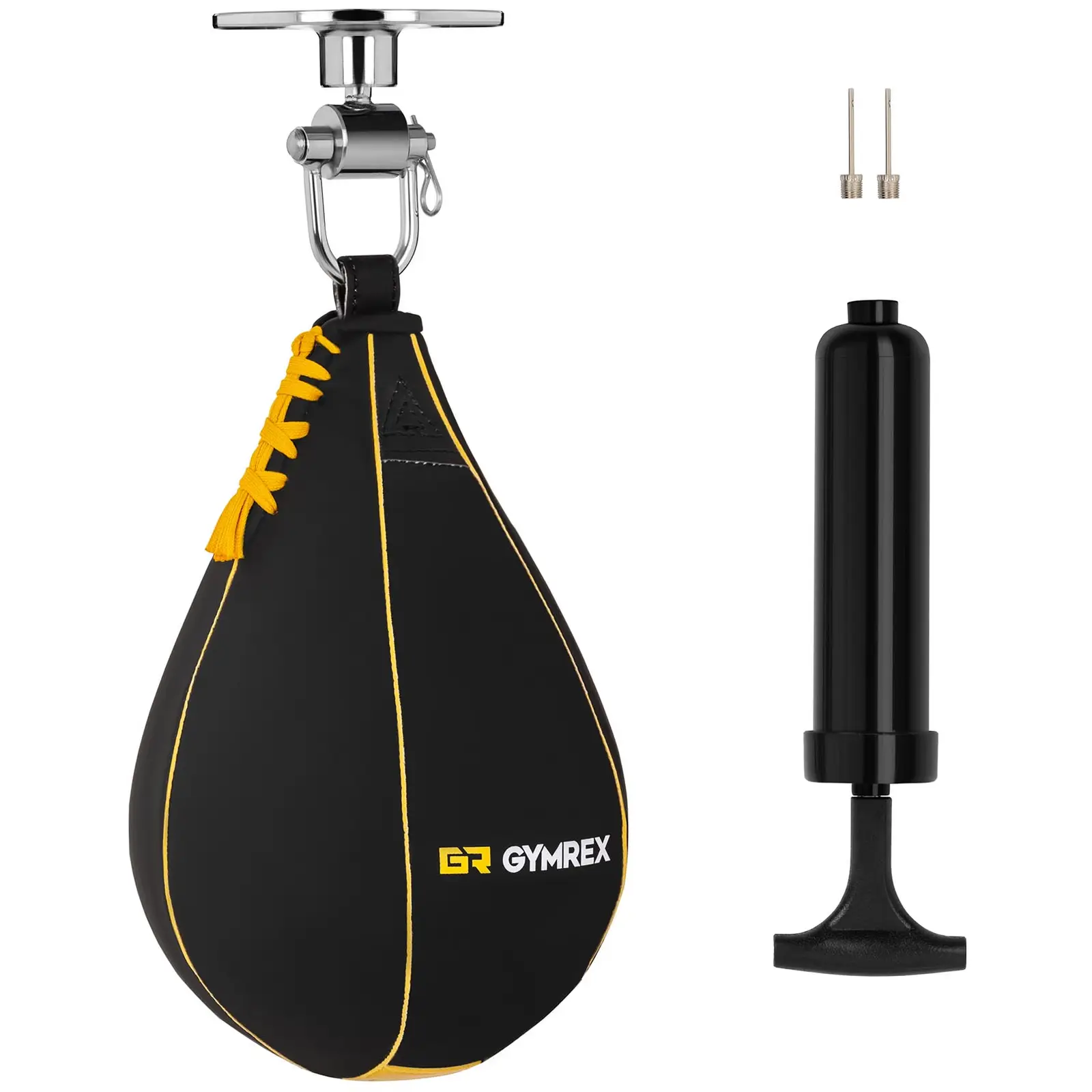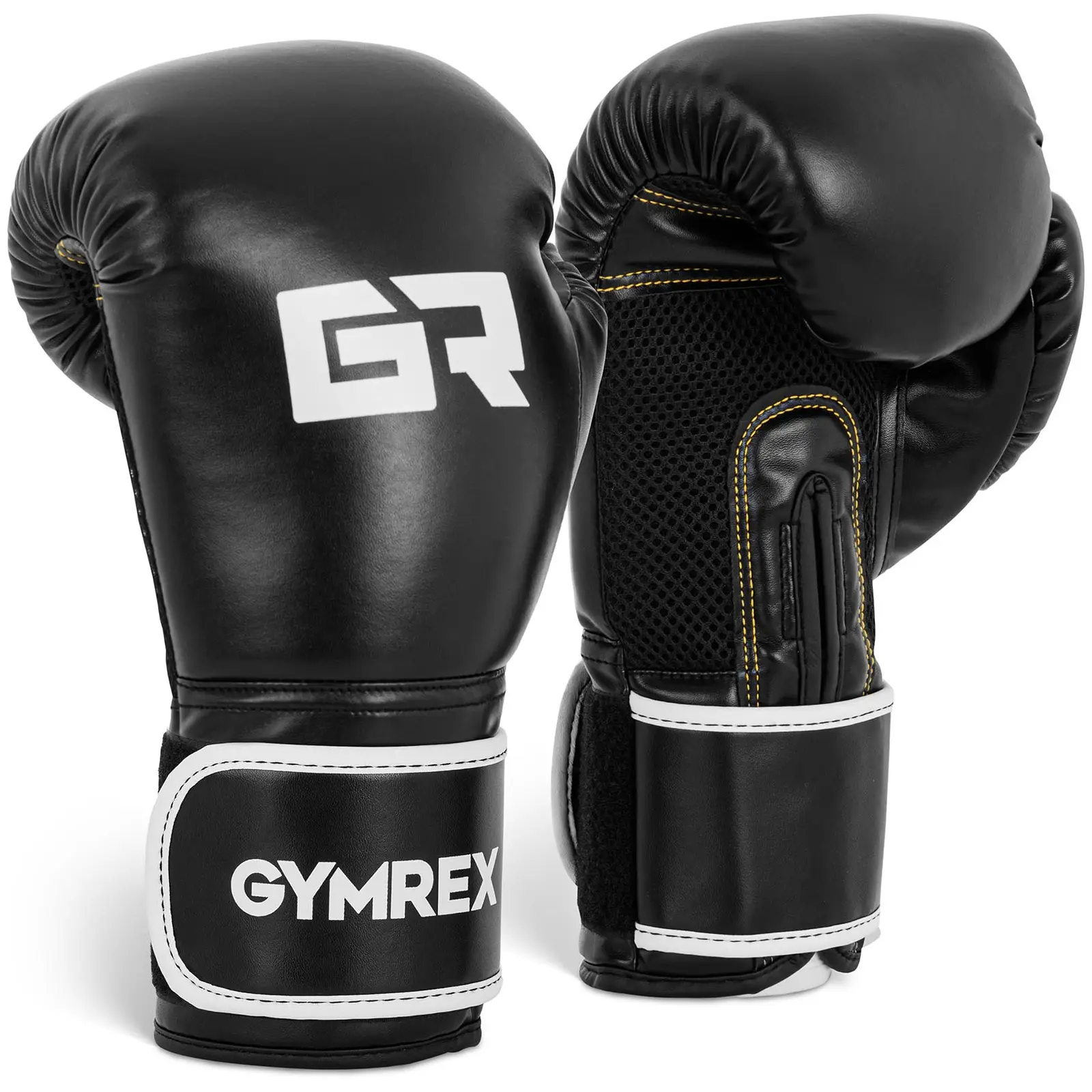Speed, power, and endurance – that’s boxing for you. If you take up the sport, you'll be training both body and mind. Sounds like a perfect mix, right? In this article, we’ll tell you why, when, and how to start boxing training.

Speed, power, and endurance – that’s boxing for you. If you take up the sport, you’ll be training both body and mind. Sounds like a perfect mix, right? In this article, we’ll tell you why, when, and how to start boxing training.
6 good reasons to start boxing
Boxing is one of the world’s oldest and most fascinating sports. It’s not just a killer workout; it’s also a competitive sport. Boxing requires endurance, strength, speed, coordination, and mental grit. People of all ages and fitness levels can give it a go.
Here are the top reasons people start boxing:
- Burn Calories: Boxing burns calories like few other sports. Why? Because you build muscle, which burns about three times as many calories as fat. The more muscle you have, the more you boost your basal metabolic rate.
- Improve Physical Fitness: Boxing is one of the best workouts to get in shape. It gets your cardiovascular system going, improves your endurance, and strengthens your muscles.
- Reduce Stress: Boxing helps to reduce stress and anxiety. How? By focusing on the training and the punching bag instead of the worries that accompany daily life. Plus, your body releases endorphins and other feel-good chemicals during exercise.
- Learn Self-Defence: Boxing can help you defend yourself in dangerous situations. It teaches you essential techniques, physical strength, and the confidence to act more assertively.
- Boost Team Spirit: Boxing might be an individual sport, but there are plenty of group training opportunities. Join a boxing club, meet like-minded people, or train with friends. Share your passion and motivate each other for the next session.
- Enjoyment: Last but not least – boxing is a blast! It’s an exhilarating sport that challenges you and gives you a great sense of achievement.
Boxing basics: footwork, stance, and punches
Thinking boxing is just about punching? Think again. Effective footwork and a strong stance are essential for boxing with your whole body and full power. That’s why training your stance is essential.
There are two main stances in boxing: The orthodox stance has the left foot and left side forward, while the southpaw stance has the right side forward. Beginners often use their dominant hand to determine their stance. Lefties typically use the southpaw stance, and righties prefer the orthodox stance.
TIP: Advanced boxers should train in both stances to improve hand-foot coordination and gain an edge in competitions.
Here’s how to assume the basic boxing stance:
- Stand upright but relaxed. Your feet should be shoulder-width apart and parallel.
- Place your lead foot about half a step forward. The toes should point slightly inward. The toes of your rear foot should point slightly outward.
- Keep your knees slightly bent. Your weight should be evenly distributed on both legs.
- Keep your fists clenched near your chin. Your elbows should stay close to your body for protection.
Boxing 101: key terms you should know
Ever heard of a jab, uppercut, or cross? Boxing involves a lot of specific terms for different techniques and punches. Here are the essential ones:
- The jab is a quick, straight punch with your lead hand. It keeps your opponent at bay or causes damage.
- The cross, also known as a “power punch,” is a straight punch with your rear hand that deals heavy damage.
- The hook is a short, side punch delivered with your whole body to hit the target from the side. It’s often used in combination with other punches to surprise your opponent.
- The uppercut is an upward punch aimed to hit the target from below, typically on the chin. This punch aims to knock your opponent back and disrupt their guard.
- A knockout (KO) is a punch that sends your opponent to the ground. The fight ends automatically if they don’t get up and resume within 10 seconds.
- Sparring refers to practice fights between boxers to improve their skills and prepare for competitions.
- To parry means to deflect or block your opponent’s punches with your own hands.
- Defence includes all techniques and movements you learn in boxing to protect yourself from attacks.
What does a typical boxing workout routine involve?
Boxing training is very demanding and requires a mix of strength, endurance, speed, and technique. Regular strength training boosts your physical power. Exercises like pull-ups, push-ups, squats, lunges, and dumbbell workouts are ideal for building muscle.
Cardio training improves your conditioning and speed. Jumping rope, cycling, jogging, HIIT, swimming, and circuit training are some of the best ways to increase endurance.
A typical boxing workout routine looks like this:
Skipping:
Skipping is one of the best exercises for improving endurance and balance. Do 5-10 minutes of skipping at the start of each training session.
Shadow boxing:
Shadow boxing helps improve technique and agility. In 3-5 rounds of 3 minutes each, practice various punch combinations and defensive techniques.
Heavy bag training:
Heavy bag training helps develop strength and speed. Refine your punching and defensive techniques here.
Sparring:
Sparring is one of the best ways to improve your technique and tactics. In 3-5 rounds of 3 minutes each, efficiently train punch and defensive combinations as well as your reaction time.
Stretching:
Stretching exercises are important for relaxing muscles and avoiding injuries. Spend about 5-10 minutes after each training session doing stretches to increase your flexibility and mobility.
Learning to box at home: the essential equipment
Ready to start boxing? Then you need some basic gear. The essential boxing equipment includes:
- Boxing Gloves: Boxing gloves are the most important piece of equipment in boxing. They protect your hands and your opponent from injury caused by hard punches. The choice of gloves depends on the training purpose and your body weight.
- Wraps: Wraps stabilize your wrists and knuckles to prevent injuries. Wrap them around your hands before putting on the gloves.
- Mouthguard: A mouthguard is crucial for protecting your teeth and jaw from punches. There are different types of mouthguards that vary in size, shape, and material.
- Punching Bag: A punching bag helps improve your punching power, technique, and endurance. Whether hanging, free-standing, a speed bag, or a double-end bag, they come in various sizes, weights, and fillings.
- Clothing: Comfortable and breathable sports clothing is essential for boxing. It allows you to move freely and feel comfortable during training.
- Skipping Rope: The skipping rope is a key cardio training tool that enhances your fitness and coordination.
- Boxing Shoes: Boxing shoes are designed for training and competitions, helping to improve your balance and stability on the ground.
- Protective Gear: During competitions or intense sparring sessions, wearing protective gear is crucial to avoid injuries. This includes headgear, chest protectors, groin guards, and shin guards.
Want to start training right away and need ideas on how to set up your home gym? Check out our inspirations. You’ll find tips and tricks for setting up both large and small workout spaces.
Calories and more: nutrition tips for peak performance
Boxing nutrition depends on various factors like weight class, training intensity, and personal preferences. Think of your body as a high-performance car – it needs the right fuel to run efficiently. A balanced and nutritious diet will support your physical performance and health. It’s worth seeking advice from professionals, like asking your GP at your next visit or consulting a nutrition coach.
Carbohydrates:
Opt for complex carbs from whole grains, fruits, and vegetables. These are like premium petrol for your body, providing essential energy. Avoid simple carbs from sugary snacks and sweets, which are like low-quality fuel.
Protein:
Protein is vital for repairing and building muscle tissue. It’s like the building blocks for your muscles. Ensure a high protein intake from foods like meat, fish, eggs, legumes, and dairy products.
Fat:
Healthy fats are crucial for heart health and the absorption of fat-soluble vitamins. Think of them as the oil that keeps your engine running smoothly. Choose unsaturated fats from nuts, seeds, avocados, and fish, and avoid saturated fats from red meat and processed foods.
Hydration:
When you sweat, you lose a lot of fluids. Keeping your body well-hydrated is like topping up your car’s coolant. Drink plenty of fluids, especially during intense training sessions and competitions. Water and unsweetened teas are ideal to prevent dehydration and maintain peak performance.
FAQs
What types of boxing training are there?
If you want to start boxing, you have several options, such as kickboxing, Thai boxing, or cardio boxing.
What are the benefits of training with a punching bag?
Training with a punching bag improves your strength and speed. It also helps you refine your punching and defensive techniques through focused punch training.
Which is better: boxing or kickboxing?
There’s no definitive “better” between boxing and kickboxing, as each sport requires different techniques and skills and focuses on various aspects of combat sports. Boxing is centred on hand techniques, while kickboxing uses both hands and feet, which can increase the risk of injury.
What equipment do you need to learn boxing?
For basic techniques, you only need comfortable sportswear. Once you start training punches with resistance, boxing gloves and a punching bag are recommended. For training with others, where you might take hits, headgear and a mouthguard are essential.
Can you teach yourself boxing at home?
It’s not advisable to teach yourself boxing, as it’s a demanding sport. Only with proper technique can you avoid injuries and get the most out of your training. Training under professional guidance helps you execute movements correctly and correct individual mistakes.
Can you start boxing at 30, 40, or 50 years old?
It’s never too late to start boxing for leisure. There’s no age limit for recreational boxing, so whether you start at 30 or 60 doesn’t matter. If you feel physically fit and are eager, you should give it a go.
In competitions and professional boxing, there are age limits. You can get a boxing license between 13 and 39 years old. To box professionally beyond that age, you must have received your first amateur license before turning 34.










Share